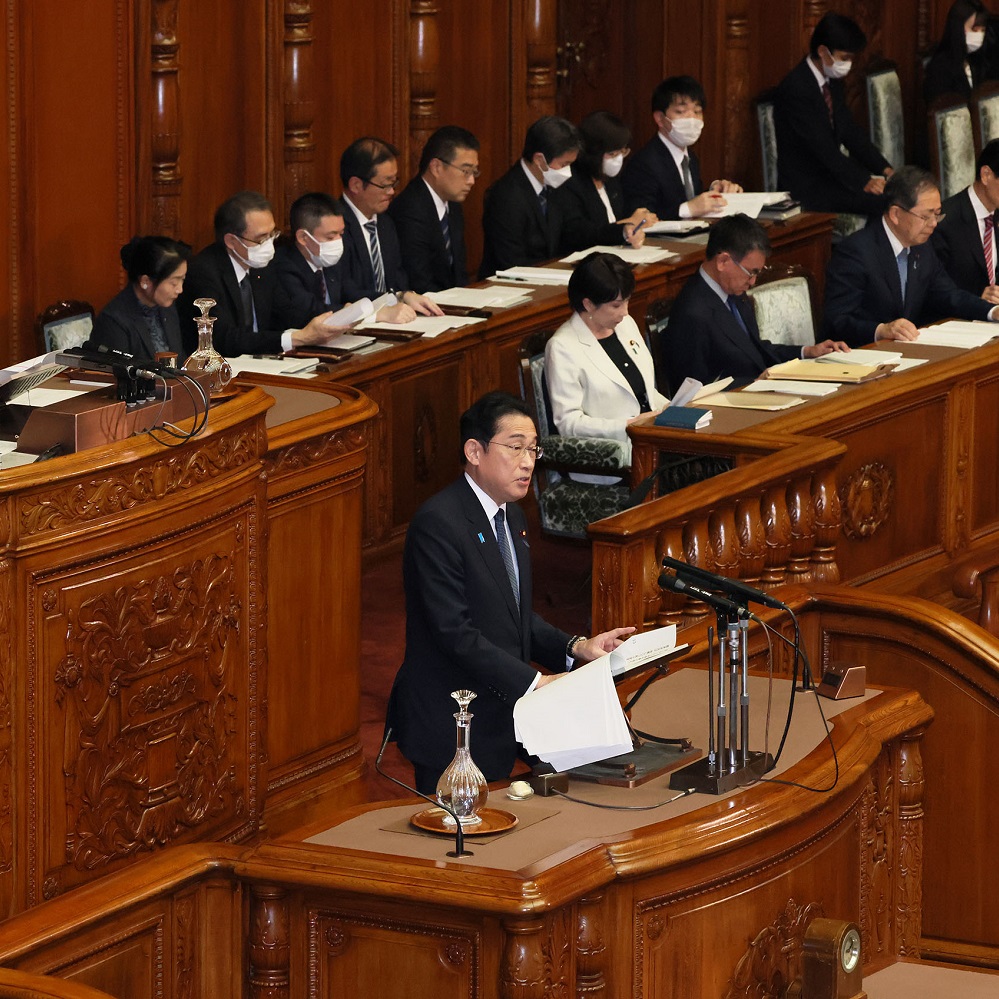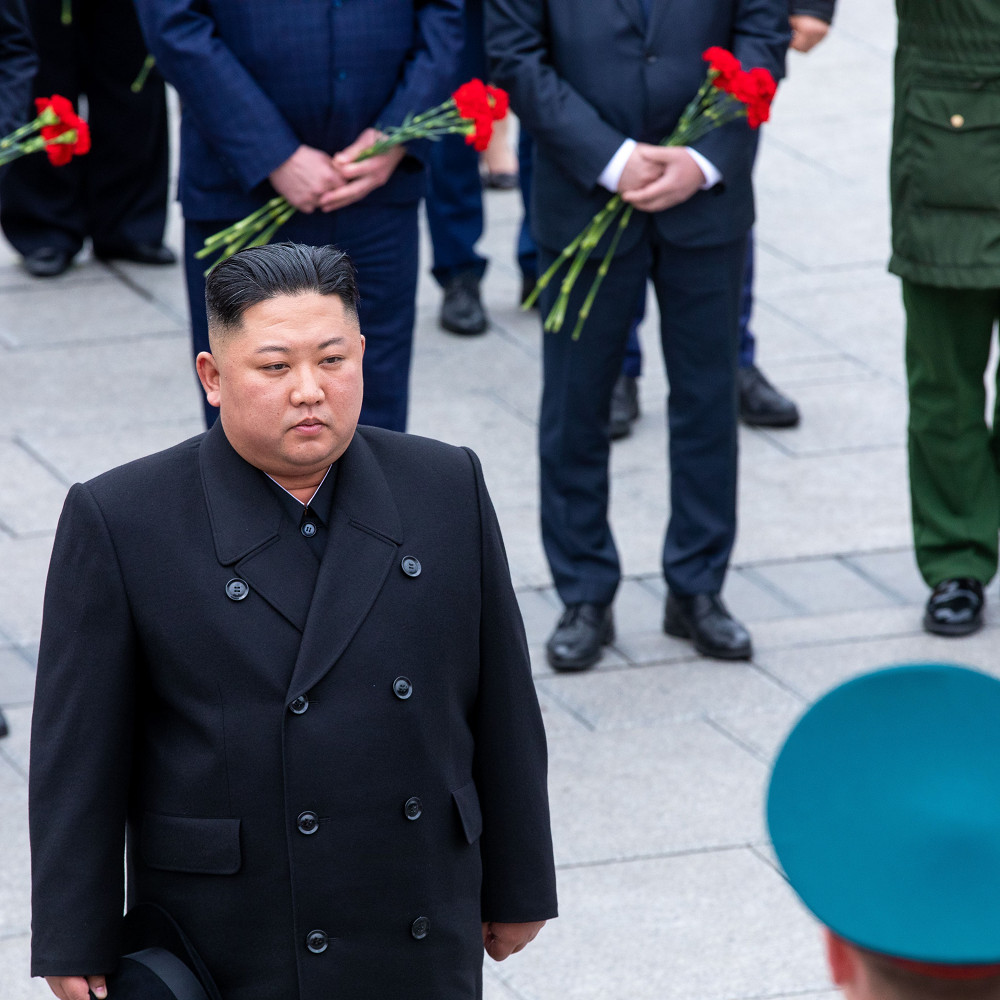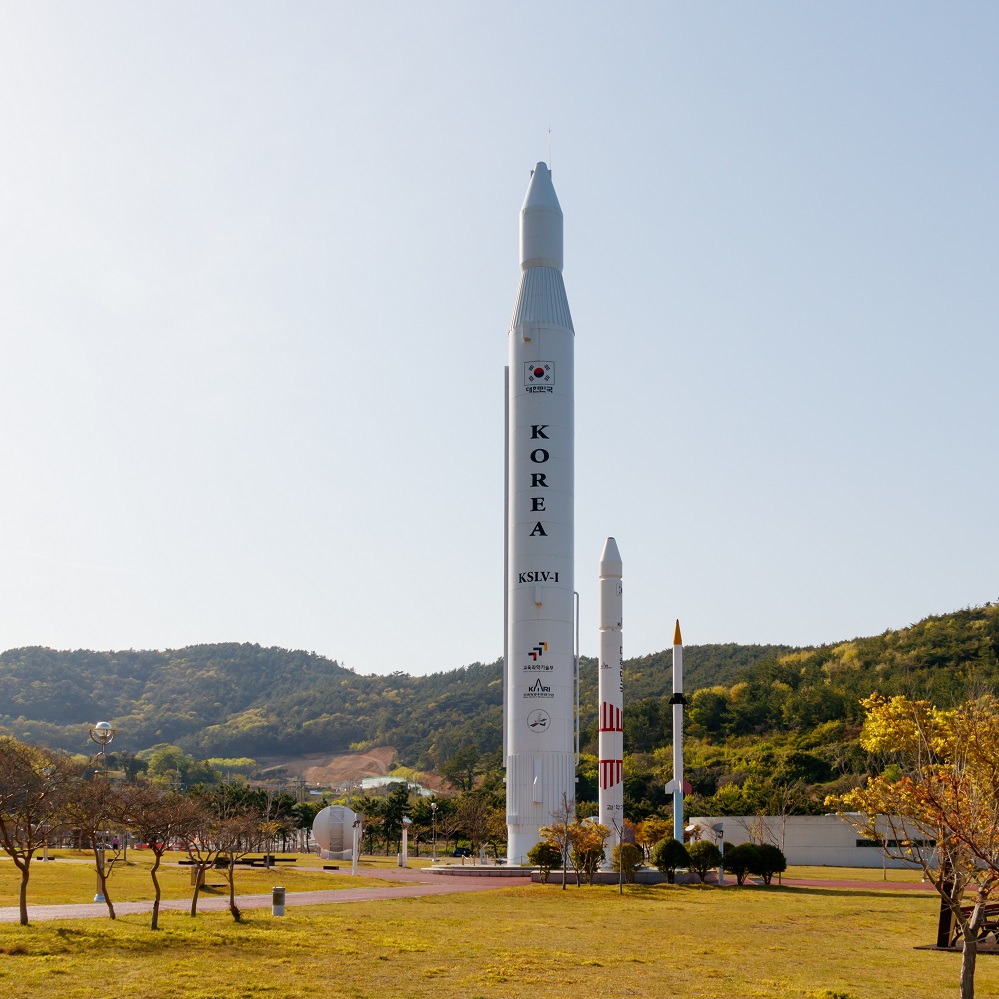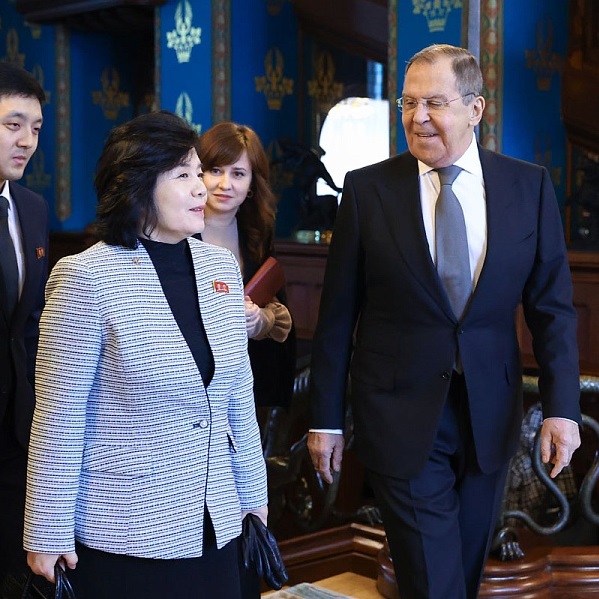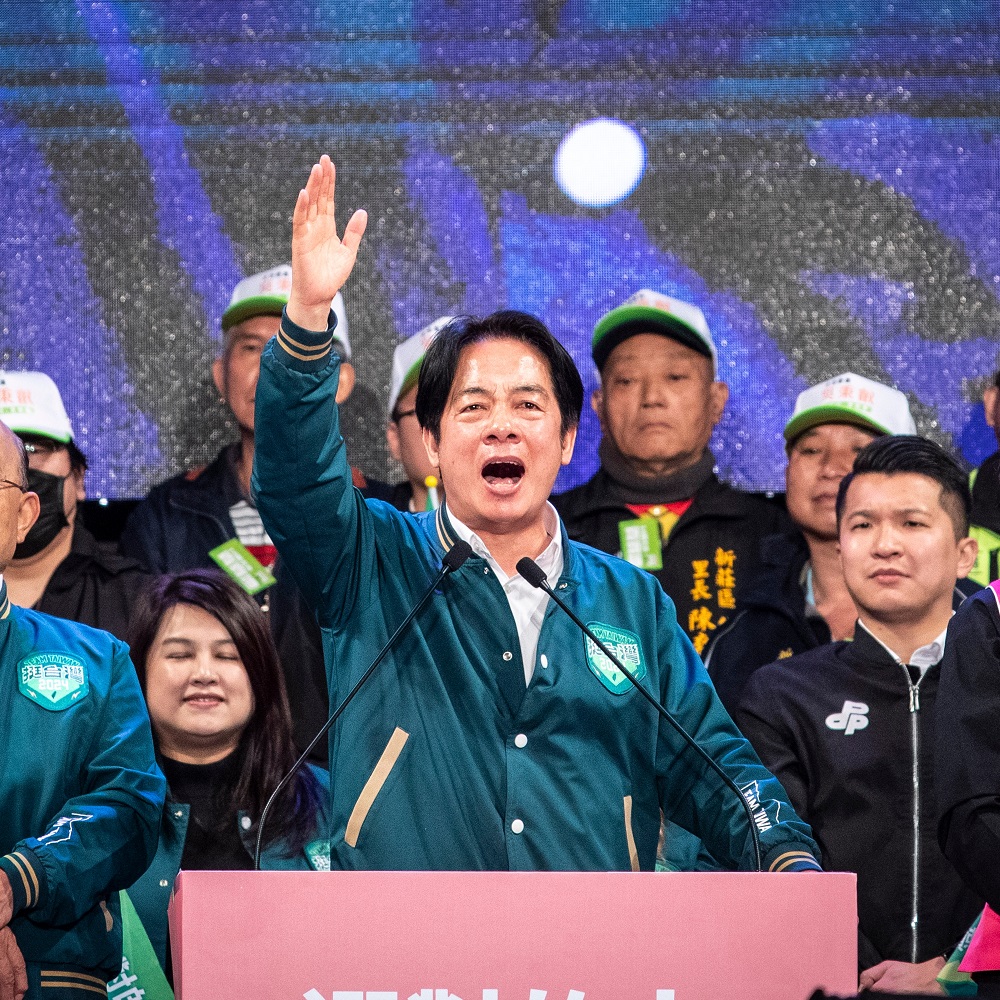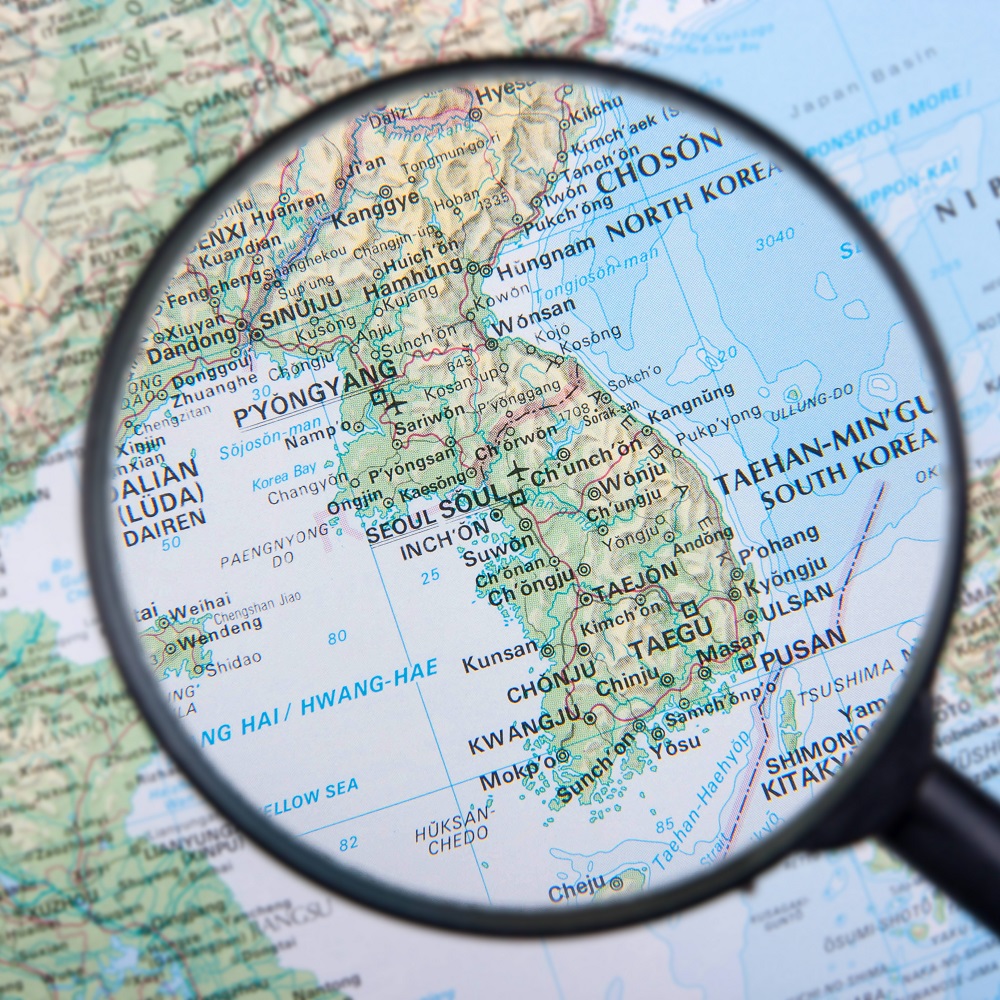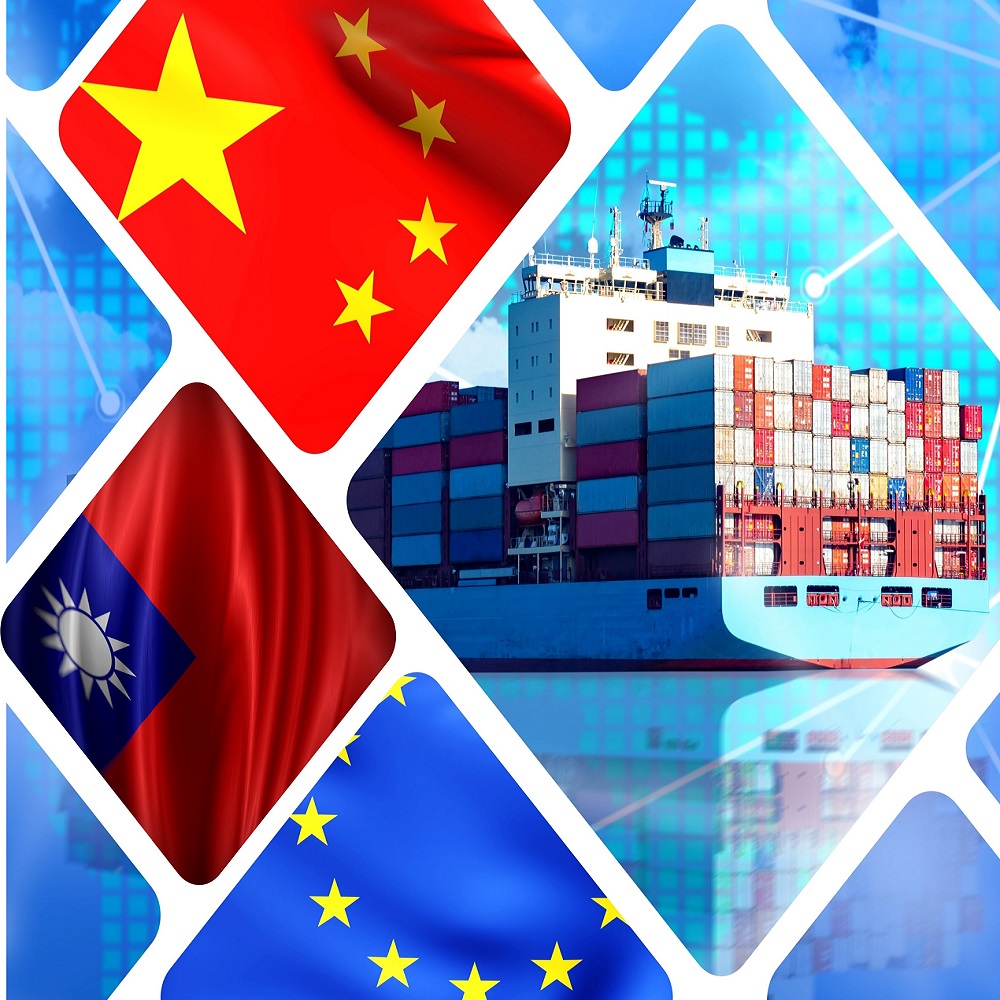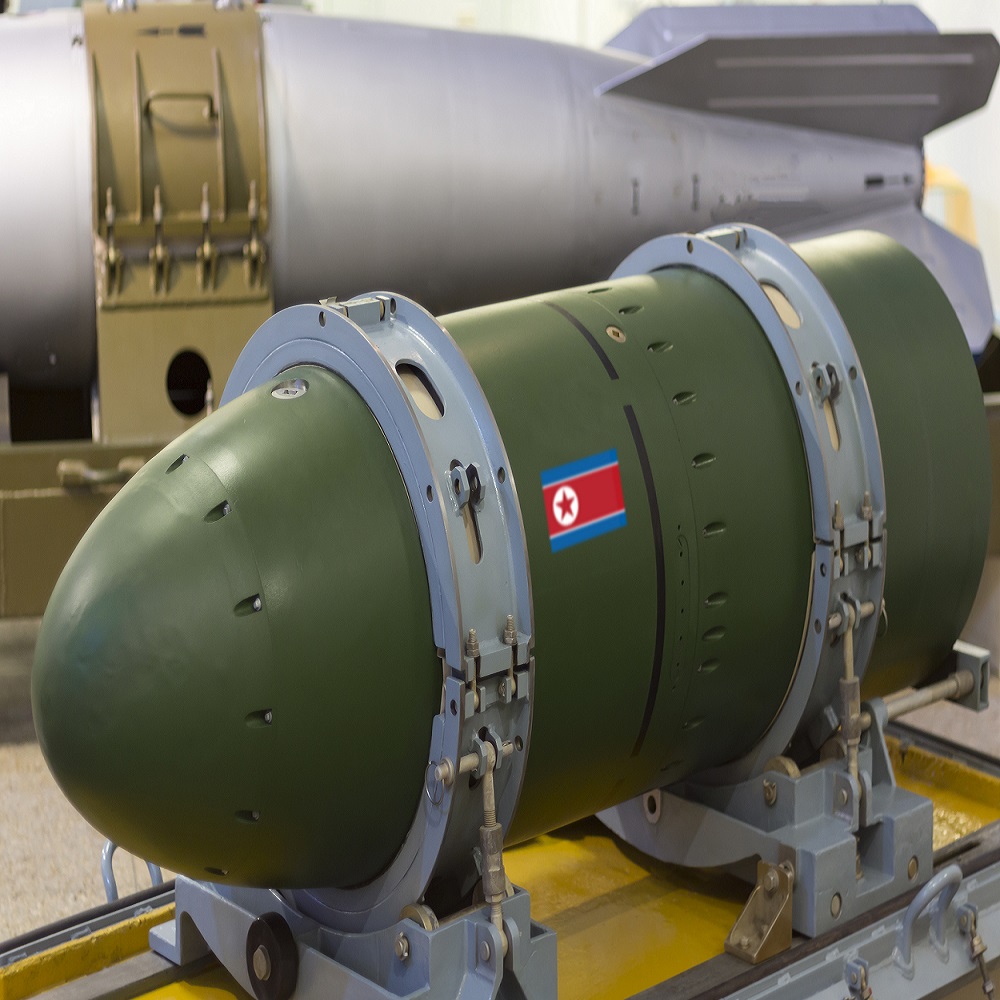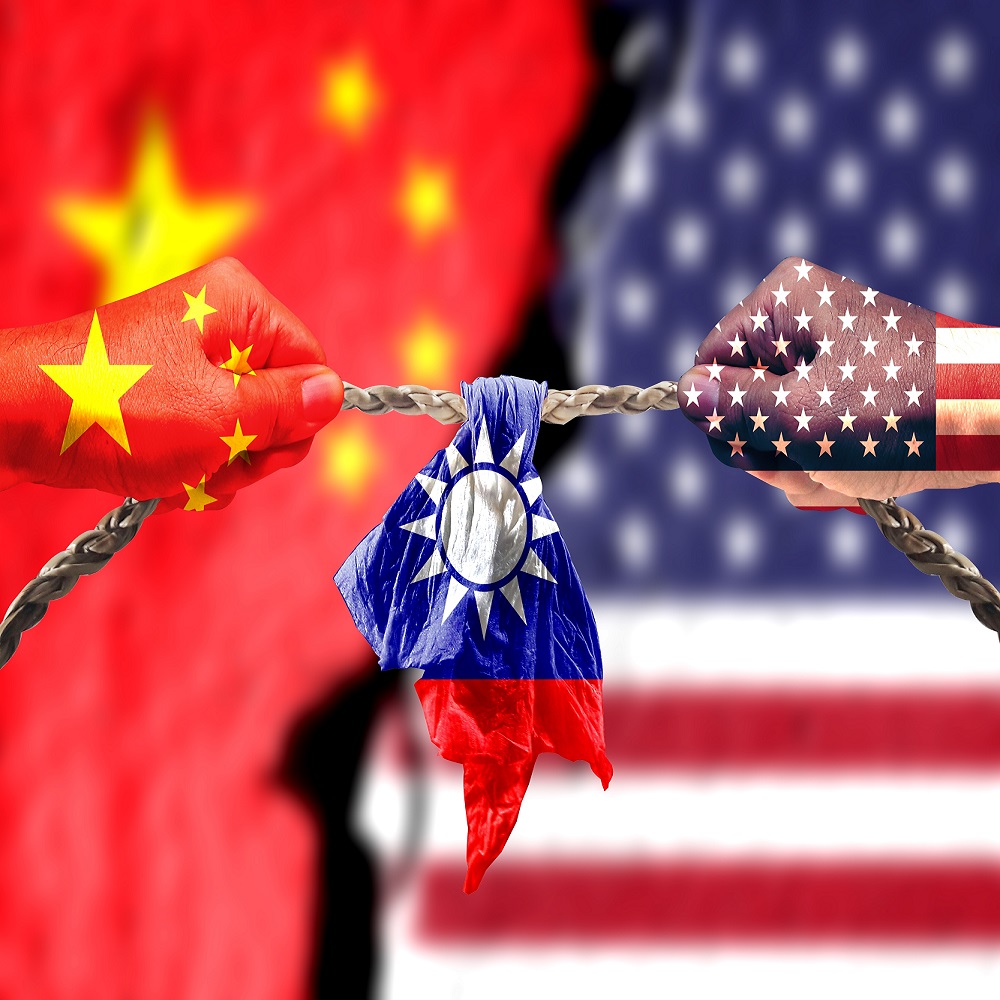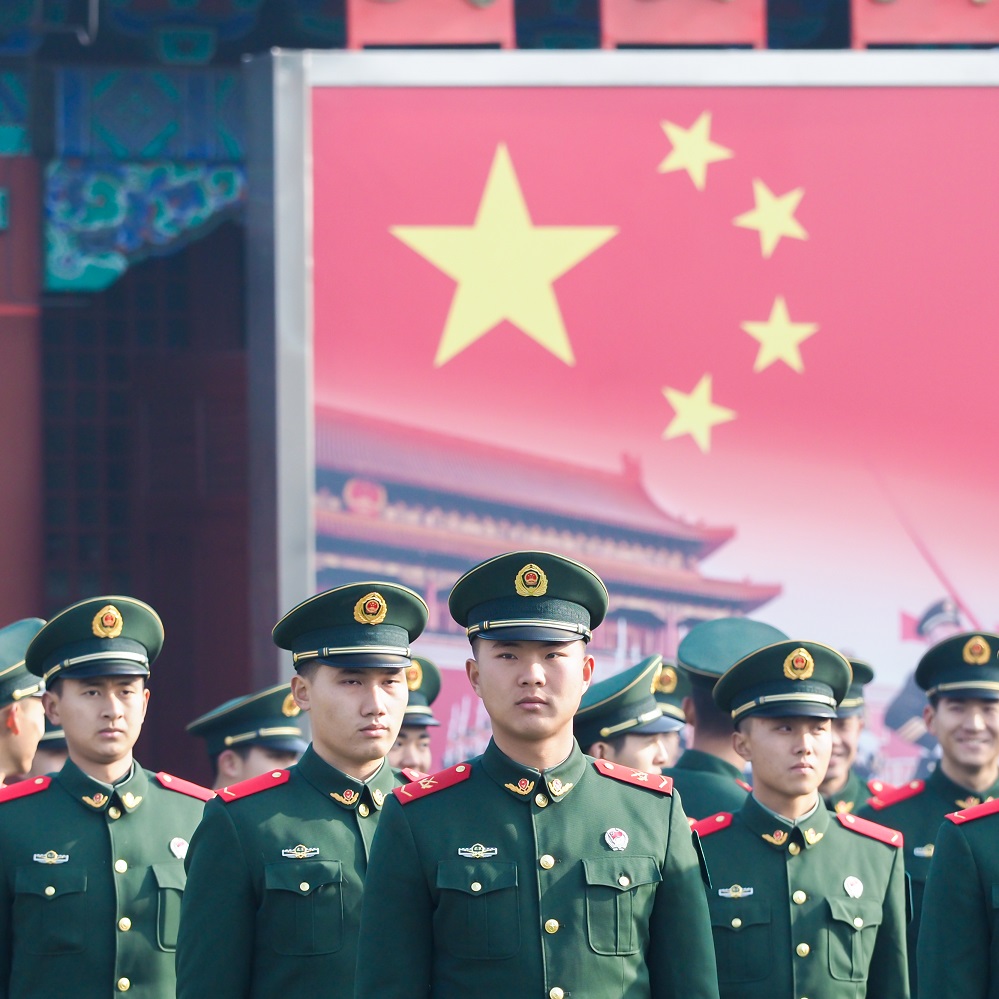Precarious Year Ahead for the Korean Peninsula
by Bruce Klingner
SUMMARY
The Korean Peninsula seems always to be on the knife edge of calamity. North Korea’s growing nuclear arsenal, its more threatening language, and the potential for more provocative and aggressive actions are a volatile combination. Overreacting to Pyongyang’s inflammatory threatening language is dangerous, but so is dismissing potential signals of a resumption of deadly tactical attacks. Indications are that this year will be even busier for Korea watchers who long ago learned to keep both a pot of coffee and a bottle of scotch nearby to deal with the inevitable crises.
KEY TAKEAWAYS
1. North Korea’s growing nuclear arsenal, its more threatening language, and the potential for more provocative and aggressive actions are a volatile combination.
2. Overreacting to Pyongyang’s inflammatory threatening language is dangerous, but so is dismissing potential signals of a resumption of deadly tactical attacks.
3. Reducing the potential for invasion while increasing transparency with respect to military forces can reduce the potential for miscalculation and a military clash.
It appears that 2024 is going to be a year for greater North Korean provocations, heightened tensions, and increased potential for tactical military clashes along the inter-Korean border. Pyongyang’s rhetoric and military posture have become more threatening, and the regime recently abandoned a military tension-reduction agreement with Seoul. That said, Pyongyang is unlikely to start a major war with South Korea and the United States deliberately. In other words, put your helmets on, but there’s no need to get under the desk just yet.
More Bombastic and Threatening Rhetoric
During major speeches in December 2023 and January, North Korean “Supreme Leader” Kim Jong-un described the Korean Peninsula as being “on the brink of a nuclear war” and called on his military to accelerate preparations for “a great event to suppress the whole territory of South Korea by mobilizing all physical means and forces including nuclear forces.”1
Kim warned that North Korea “does not want war, but we also have no intention of avoiding it” and that a “physical clash can be caused and escalated even by a slight accidental factor in the area along the Military Demarcation Line.”2
Kim Yo-jong, Kim Jong-un’s powerful sister, declared similarly that “the safety catch of [the] trigger of the Korean People's Army (KPA) had already been slipped” and that Pyongyang “will launch an immediate military strike if the enemy makes even a slight provocation.”3
Kim Jong-un also abandoned decades of North Korean policy seeking reconciliation and reunification with South Korea, instead describing inter-Korean relations as now being between “two hostile and belligerent states.”4
This declaration is particularly noteworthy because Kim is implicitly criticizing the unification policy of both his grandfather Kim Il-sung and his father Kim Jong-il. Such blasphemous remarks coming from anyone else would have immediate and dire consequences. To emphasize the new policy, Kim disbanded all government agencies devoted to relations with South Korea and demolished the massive monument to Korean unification that had been commissioned by his father Kim Jong-il, describing it as an “eyesore.”5
North Korea backed up its diatribes with artillery fire along the naval boundary off the west coast of the Korean Peninsula. Pyongyang fired a total of 350 shells during three consecutive days in early January, and South Korea responded by firing 400 artillery rounds. While all shells remained on each country’s side of the disputed Northern Limit Line that delineates the de facto maritime border between the two Koreas, they did land in the former buffer zone created by the 2018 inter-Korean Comprehensive Military Agreement.
That bilateral risk-reduction accord had proscribed artillery fire and military drills near the border area. Pyongyang’s nullification of the agreement in November 2023 will return armed North and South Korean troops back to closer contact. Seoul announced that it would resume army, navy, and Marine Corps live-fire artillery drills and regiment-level field maneuvers within five kilometers of the Demilitarized Zone (DMZ).6
North Korea’s belligerent declarations, along with escalating provocations, may be intended to influence both the April 10 South Korean National Assembly election and the November U.S. presidential election. However, such actions would more likely affirm pre-existing progressive and conservative views rather than they would to induce any voters to change sides.
Inexorably Growing Military Threat
North Korea has been on a multi-year binge of testing and deploying improved nuclear-capable systems that can target South Korea, Japan, and the continental United States. Most recently, Pyongyang successfully launched a solid-fueled ICBM, a solid-fueled intermediate-range missile with a hypersonic maneuverable warhead, its first military reconnaissance satellite, submarine-launched cruise missiles, and an underwater nuclear-capable drone.
Knowing that he is backed in the U.N. Security Council by China and Russia could embolden Kim Jong-un to pursue even more provocative behavior. In the past, Beijing and Moscow were willing to impose U.N. resolutions and sanctions after North Korean ICBM and nuclear tests, but both countries now block new international actions in response to Pyongyang’s repeated violations of previous U.N. resolutions.
North Korea could conduct its long-awaited seventh nuclear test—either of a new generation of tactical battlefield nuclear weapons or of Kim’s promised “super large” weapon. In its last nuclear test in 2017, Pyongyang exploded a hydrogen bomb at least 10 times as powerful as the 1945 atomic weapons used against Hiroshima and Nagasaki.
The regime could also launch an ICBM over Japan and demonstrate multiple-warhead or re-entry vehicle capabilities. To date, all ICBM launches have been on a nearly vertical lofted trajectory to avoid flying over other countries. North Korean provocations are expected to increase in the run-up to the annual U.S.–South Korean large-scale military exercises in March.
Trilateral Axis of Authoritarianism
Pyongyang’s recently strengthened relationship with Moscow is another cause for concern. In return for shipping over a million artillery shells and rockets to Russia for Moscow to use in its attacks on Ukraine, North Korea is likely to receive some military technology. While some experts believe that this could include nuclear warhead, re-entry vehicle, or ICBM technology, Moscow is less likely to provide those “crown jewels” than it is to provide lower-level conventional weapon technology. However, any Russian assistance to improve North Korean weapons is worrisome to the U.S. and its allies.
Both China and North Korea responded to Russia’s invasion of Ukraine by increasing their economic and military support to Moscow. There is growing apprehension of the risk of horizontal escalation in which Beijing or Pyongyang could take advantage of the global focus on crises in Ukraine and the Middle East to initiate their own coercive or military actions against Taiwan or South Korea.
Clashes but Not War
Some experts speculate that the situation on the Korean Peninsula is the most dangerous it has been since the 1950 North Korean invasion of the south and that Kim Jong-un has already made the strategic decision to go to war.7
However, despite its menacing posturing, Pyongyang would not have sent massive amounts of artillery shells and rockets as well as dozens of its new KN-23 missiles to Russia if it were contemplating starting a war with South Korea. Nor has any buildup of North Korea military forces along the inter-Korean border been detected.
More probable is another tactical-level military clash along the DMZ or maritime Northern Limit Line. South Korean officials privately comment that they cannot rule out another deadly North Korean attack such as the 2010 sinking of the South Korean naval ship Cheonan and shelling of Yeonpyeong Island, which cumulatively killed 50 South Koreans.
Danger of Stumbling Into Major Conflict
Both Koreas have been more vocal in their vows to strike preemptively if they perceive—or misperceive—the other side as preparing for an attack. In 2022, North Korea revised its nuclear law and disturbingly lowered the threshold for its use of nuclear weapons. The regime is developing smaller tactical nuclear warheads for deployment to forward-based units, and their proximity to allied forces across the DMZ could lead to a “use it or lose it” strategy for its vulnerable nuclear arsenal during the early stages of a conflict.
South Korean President Yoon Suk Yeol has shown a greater willingness to respond firmly to North Korean threats than his predecessor did. He directed enhancement of South Korea’s preemptive attack capabilities and declared, “Should North Korea make a provocation, we will punish it many times over.”8
He told his military to “immediately respond and retaliate before reporting to [higher authorities and] sternly and swiftly smash the enemy’s intentions to stage provocations on the spot.”9
The danger of miscalculated military action is real, even at a tactical level. In 2015, Seoul announced that North Korea had fired 13 artillery shells into South Korea and it had responded with 39 shells into the North. However, a subsequent investigation by United Nations Command revealed that there had been no North Korean military attack. Instead, South Korean counter-battery radar had misinterpreted a nearby lightning storm as inbound artillery fire. Luckily, North Korea did not respond to the unprovoked South Korean action.
What Washington Should Do
Washington must walk a fine line between maintaining a strong military posture to deter and if necessary respond to North Korean military actions while also minimizing the risk of inadvertent escalation into a strategic war. With this in mind, the U.S. should:
• Enhance trilateral security cooperation. The U.S., along with South Korea and Japan, should continue ongoing efforts to increase coordination among their three militaries. South Korean President Yoon acknowledged the importance of Tokyo’s role in a Korean contingency, including the seven U.N. Command bases in Japan. During their August 2023 Camp David summit, the three leaders pledged even more extensive trilateral military exercises, real-time exchange of information on North Korean missile launches, and increased cooperation on ballistic missile defense. The leaders’ commitment to consult and coordinate responses to common security threats was a major step forward in trilateral military cooperation but stopped far short of formal alliance.
The three countries should continue and expand the scope of the trilateral combined military exercises that resumed in 2022 after a four-year hiatus. The wide-ranging exercises reversed the degradation in allied deterrence and defense capabilities as did the resumption of U.S. rotational deployment of strategic nuclear-capable assets to the Korean theater of operations.
• Ensure that military exercises are strong but constrained in location. The U.S. and its allies should be aware that any large-scale unannounced combined military operations close to North Korea’s borders run the risk of being misinterpreted by Pyongyang as preparations for an allied attack. Therefore, while maintaining high levels of military training, the exercises should be announced beforehand and not conducted close to North Korean forces along the DMZ. Washington should also counsel Seoul against highly escalatory responses to North Korean actions.
However, appearing too heavy-handed in trying to curtail a South Korean response to a tactical-level attack risks undermining ongoing U.S. efforts to reassure Seoul of America’s commitment to its defense. After both 2010 North Korean attacks, South Korean officials privately complained that the U.S. had “sat on its ally” and prevented a South Korean retaliation. More recently, North Korea’s growing ability to hit the American homeland with nuclear weapons caused South Koreans to doubt the viability of the U.S. as an ally and led to greater domestic advocacy for an indigenous nuclear weapon program.
• Push for risk-reduction talks. There seems to be little potential for a diplomatic off-ramp on the road to crisis with North Korea. Since late 2019, the regime has rejected all U.S. and South Korean entreaties for dialogue on any topic, including provision of humanitarian aid. Nor does Pyongyang’s cancelling the inter-Korean Comprehensive Military Agreement bode well for negotiations.
However, the proximity of several militaries to each other, rising suspicions, and mutual threats of preemptive attacks are a recipe for disaster. Washington and Seoul should call on Pyongyang to discuss potential risk-reduction and military confidence-building measures similar to those in the Conventional Armed Forces in Europe Treaty and the accompanying Vienna Document of Confidence and Security Building Measures. Reducing the potential for either side to conduct a sudden-start invasion while increasing transparency with respect to military forces can lower tensions by reducing the potential for miscalculation leading to a military clash.
Conclusion
The Korean Peninsula seems always to be on the knife edge of calamity, but North Korea’s growing nuclear arsenal, its more threatening language, and the potential for more provocative and aggressive actions are a volatile combination. Overreacting to Pyongyang’s inflammatory threatening language is dangerous, but so is dismissing potential signals of a resumption of deadly tactical attacks. Indications are that this year will be even busier for Korea watchers who long ago learned to keep both a pot of coffee and a bottle of scotch nearby to deal with the inevitable crises.
References:
1- Korea Central News Agency, “Report on 9th Enlarged Plenum of 8th WPK Central Committee,” KCNA Watch, December 31, 2023, (accessed February 5, 2024). https://kcnawatch.org/newstream/1704027054-512008976/report-on-9th-enlarged-plenum-of-8th-wpk-central-committee/
2- Ibid. and Brad Lendon and Gawon Bae, “North Korea’s Kim Vows to Dismantle Father’s Unification Arch as He Declares South Korea ‘Principal Enemy,’” CNN, January 16, 2024, https://www.cnn.com/2024/01/16/asia/north-korea-kim-unification-arch-intl-hnk/index.html (accessed February 5, 2024).
3- Reuters, “North Korea Vows Military Strike If Any Provocation, Fires Artillery Rounds,” January 7, 2024, https://www.reuters.com/world/asia-pacific/north-koreas-kim-yo-jong-vows-immediate-response-provocation-kcna-2024-01-07/ (accessed February 5, 2024).
4- Korea Central News Agency, “Report on 9th Enlarged Plenum of 8th WPK Central Committee.”
5- Lendon and Bae, “North Korea’s Kim Vows to Dismantle Father’s Unification Arch as He Declares South Korea ‘Principal Enemy.’”
6- Chae Yun-hwan, “Military Set to Resume Drills Halted Under 2018 Inter-Korean Accord Buffer Zones,” Yonhap News Agency, January 9, 2024, https://en.yna.co.kr/view/AEN20240109007400315#:~:text=SEOUL%2C%20Jan.,artillery%20firing%2C%20officials%20said%20Tuesday (accessed February 5, 2024).
7- Robert L. Carlin and Siegfried S. Hecker, “Is Kim Jong Un Preparing for War?” Henry L. Stimson Center, 38 North, January 11, 2024, https://www.38north.org/2024/01/is-kim-jong-un-preparing-for-war / (accessed February 5, 2024).
8- Sarah Kim, “After North Declares ‘Hostile’ Relations, Yoon Vows to ‘Punish’ Regime in Case of a Provocation,” Korea Joongang Daily, updated January 18, 2024, https://koreajoongangdaily.joins.com/news/2024-01-16/national/northKorea/Yoon-vows-to-punish-North-Korea-many-times-over-in-case-of-a-provocation-/1959411?detailWord= (accessed February 5, 2024).
9- Hyung-Jin Kim, “North Korea’s Kim Vows to Bolster War Readiness to Repel US-Led Confrontations,” Associated Press, updated December 28, 2023, https://apnews.com/article/north-korea-kim-party-meeting-missiles-27803fcfbfa9cb2a89d6fb5e824e9c0c (accessed February 5, 2024).
